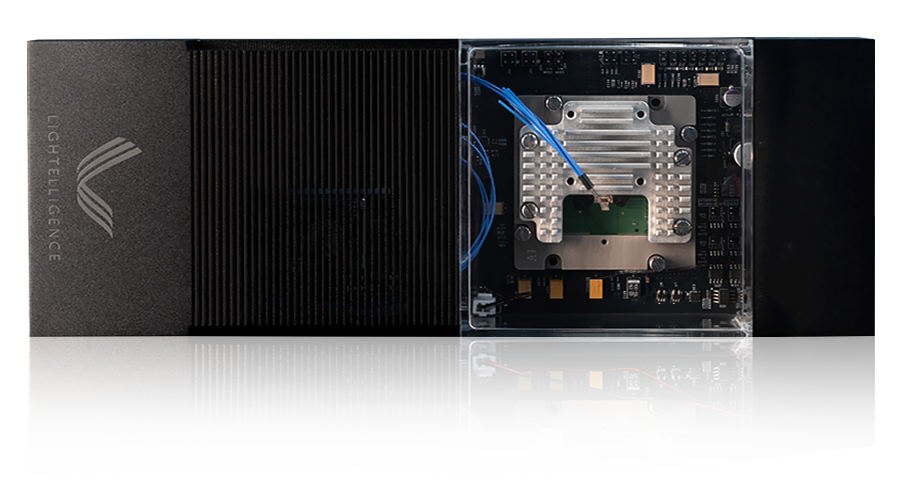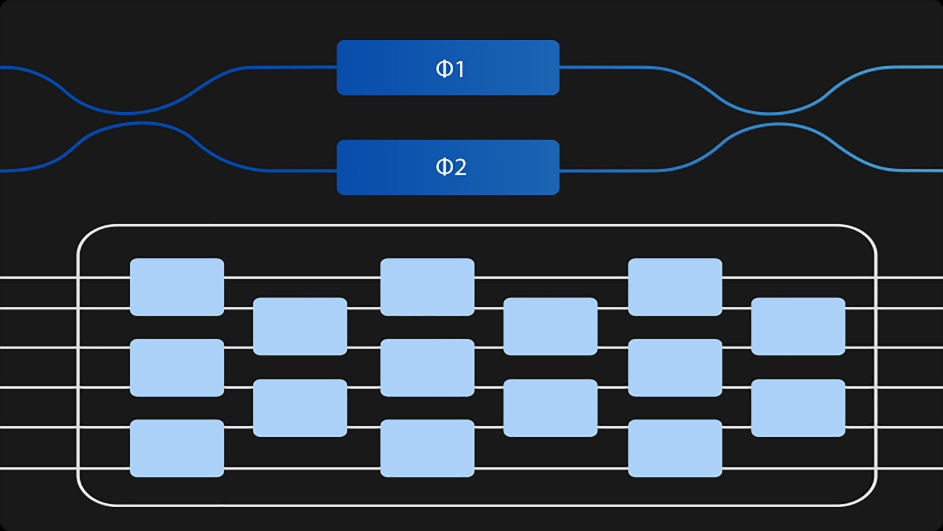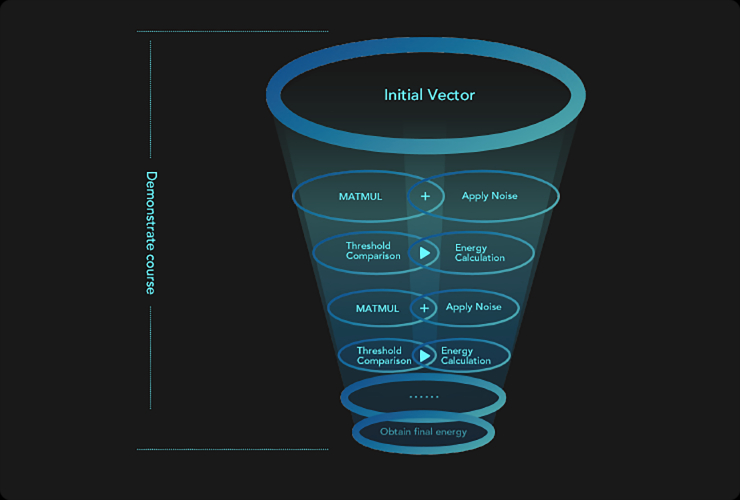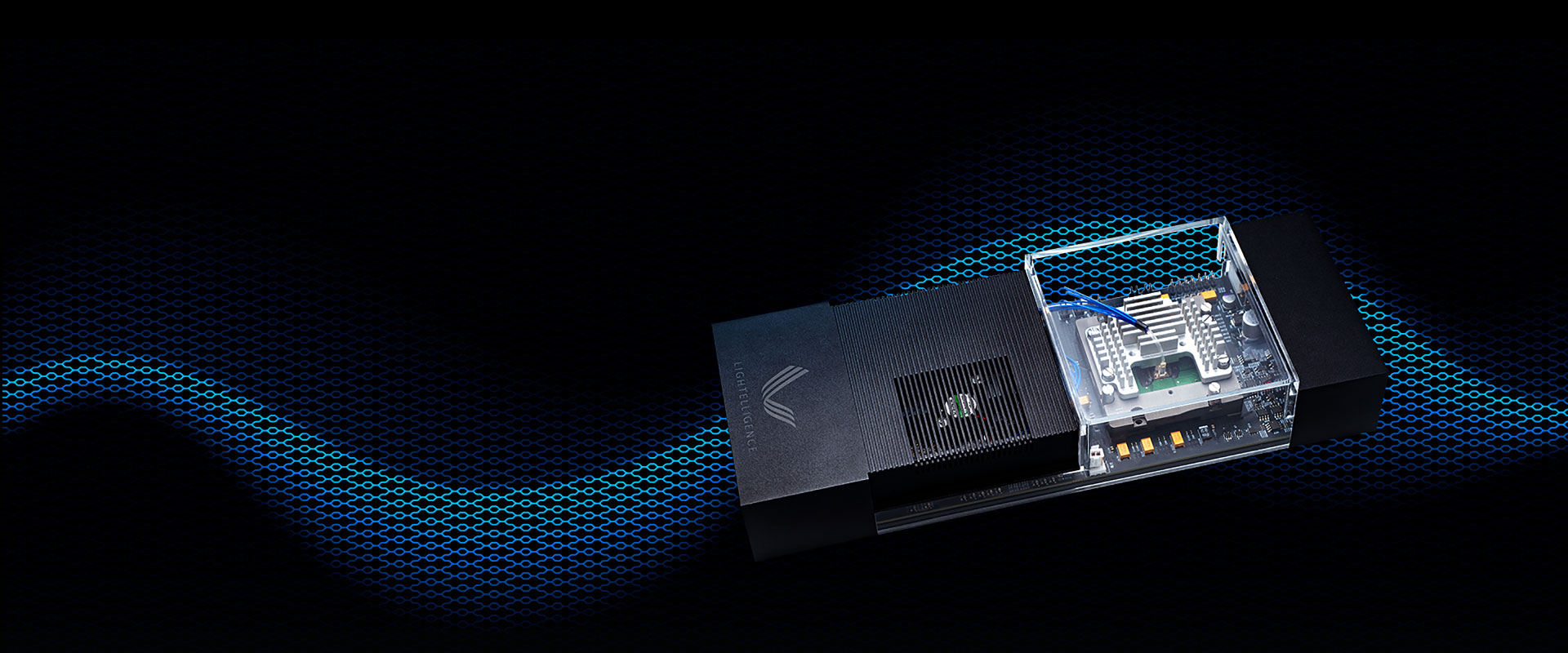
Overview
Photonic Arithmetic Computing Engine
PACE (Photonic Arithmetic Computing Engine) is Lightelligence' s first fully integrated photonic computing platform. The core of PACE is a 64x64 optical matrix multiplier in an integrated silicon photonic chip and a CMOS microelectronic chip, flipchip packaged together. In addition to its advanced 3D packaging, PACE's photonic chip contains over 12,000 discrete photonic devices and has a system clock of 1GHz.

64x64
oMAC core150ps
oMAC Computing DelayKey Technology
oMAC – OPTICAL MULTIPLY ACCUMULATE
For each optical Matrix Multiplication (MATMUL), the input vector values are first extracted from the on-chip SRAM before being turned into analog values by the digital-analog converter. Next, the values are applied to their corresponding optical modulators through micro bumps between the electronic and photonic chips to form the input optical vector. The input optical vector then propagates through the optical matrix to generate the output optical vector. The vector then hits an array of photodetectors, which turn optical intensity into electric current. The electrical signals then travel back to the electronic chip through micro bumps and pass through the transimpedance amplifier and the analog-digital converter before returning to the digital domain.

Approach
Based on a silicon photonics platform compatible with CMOS processes, optical-electrical co-design, and advanced packaging solutions
Novel design using high speed, configurable, compact modulators
Unique computing architecture: coherent and incoherent architectures
Based on MZI structure
Hardware-algorithm co-optimization


Highlights


Strong parallel ability


Ultra-low
latency


Energy efficiency
comparable to EIC


Low-cost and low process requirements
Demonstration
PACE is designed to solve the lsing problem for two cases, with N=63 and N=64 spins. The interaction between every two spins is encoded by the NxN-size matrix H, the adjacency matrix of the graph of the Ising model. The state of all the spins is described by the N-size binary vector S, called the state vector.



Usage Scenario
LIGHT UP THE FUTURE OF CHIPS













